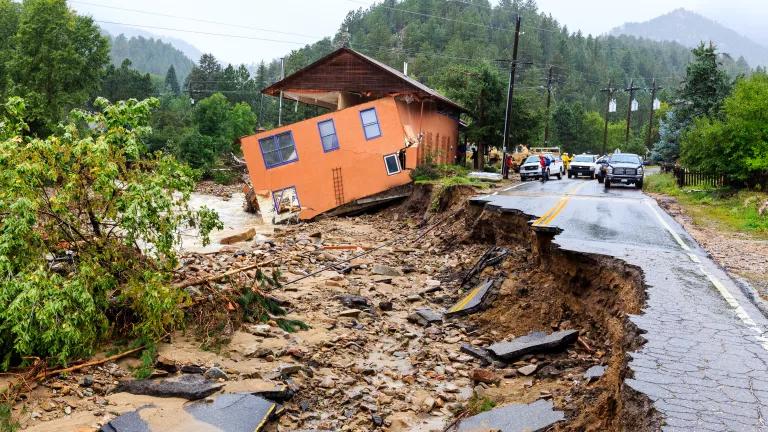Climate Risks are Financial Risks: Helping Big Banks Prepare
Banking Supervisors are Recognizing the Impact Climate has on the Financial System

The Federal Reserve Board of Governors, the Office of the Comptroller of the Currency (OCC), and the Federal Deposit Insurance Corporation (FDIC) this week released principles for banks with over $100 billion in assets to use in managing financial risks related to climate. “The financial impacts that result from the economic effects of climate change and the transition to a lower carbon economy,” the agencies said, “pose an emerging risk to the safety and soundness of financial institutions and the financial stability of the United States.”
A failure to properly manage these risks can lead banks to reduce essential services to consumers in times of crisis, or even to bank failures or larger systemic collapses. Potential harms could include disproportionate impacts on the financially vulnerable, including low- to moderate-income (LMI) and other disadvantaged households and communities. Rather than wait for this to happen, these federal regulators are moving to ensure that banks are managing climate-related financial and non-financial risks consistent with their existing risk management practices. The guidance helps to ensure that the largest banks do so, and helps them to integrate climate risk into their existing frameworks.
Banks already have detailed risk management frameworks in place for traditional risks. The new guidance directs banks to incorporate material climate-related financial risks into those existing frameworks, consistent with the requirements of existing rules and guidance. And this new guidance is intended to support efforts by financial institutions to focus on the key aspects of climate risk management.
Smaller Institutions Need Guidance Too
The agencies have chosen, as a first step, to address this guidance only to the largest institutions. But it is important that they follow up promptly with a timeframe and then actual guidance for smaller banks, appropriately tailored to their situations and different risk profiles. For example, smaller financial institutions may have greater concentration risk, including industry and geographic concentrations. A large percentage of a rural bank’s loan portfolio might consist of loans to farmers with outsize drought risk. Other smaller banks may have concentrated exposure coastal property owners with worsening hurricane and flooding exposure, or to fossil fuel businesses jeopardized by transition risk.
Incorporating Climate Risks Could Adversely Impact Climate-Burdened Communities
As banks begin to adopt enhanced climate risk mitigation measures, there’s a risk that this could disproportionately affect climate-burdened communities—often lower-income communities and communities of color. From an institutional safety and soundness perspective, it is extremely important for banks to identify concentration risks that relate to climate. But risk mitigation measures could disproportionately burden low-to-moderate income (LMI) or disadvantaged communities if banks increase interest rates in or potentially withdraw services from these climate-burdened areas. Hence, we strongly encourage the agencies to develop additional guidance to help banks ensure fair and equitable access to financial services within LMI and climate-burdened communities.
These Principles are an important first step to ensure the safety and soundness of the financial system in the face of climate-related risks.The next step for the agencies is to harness this momentum and provide similar guidance to small and medium sized banks, many of which face increasingly acute risks from a rapidly changing climate, while considering potential adverse effects of the use of climate risk models on equitable access to financial services.




